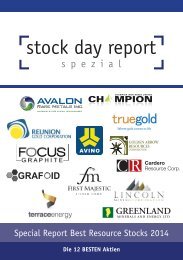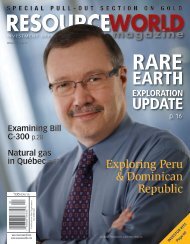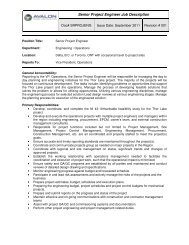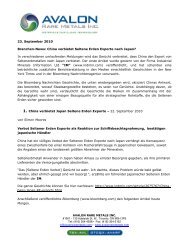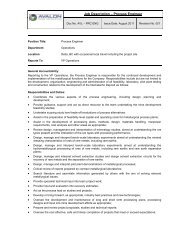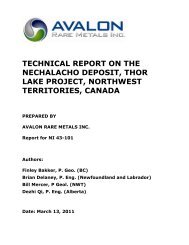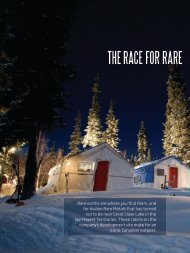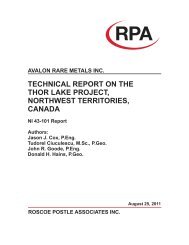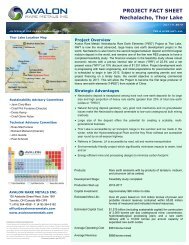RARE EARTHS 101 - Avalon Rare Metals
RARE EARTHS 101 - Avalon Rare Metals
RARE EARTHS 101 - Avalon Rare Metals
You also want an ePaper? Increase the reach of your titles
YUMPU automatically turns print PDFs into web optimized ePapers that Google loves.
<strong>RARE</strong> EARTH BASicS<br />
<strong>Rare</strong> Earth Elements (‘REE’) are non-toxic elements essential to a cleaner environment and<br />
reduced reliance on fossil fuels. Also, REE are an enormous potential benefit to human health.<br />
3<br />
Li<br />
4<br />
Be<br />
40<br />
Zr<br />
41<br />
Nb<br />
31<br />
Ga<br />
32<br />
Ge<br />
37<br />
Rb<br />
57<br />
La<br />
55<br />
Cs<br />
39<br />
Y<br />
72<br />
Hf<br />
73<br />
Ta<br />
49<br />
In<br />
50<br />
Sn<br />
58<br />
Ce<br />
59<br />
Pr<br />
60<br />
Nd<br />
61<br />
Pm 62<br />
Sm 63 Eu 64 Gd 65 Tb 66 Dy 67 Ho 68 Er 69<br />
Tm 70 Yb 71 Lu<br />
Other <strong>Rare</strong> <strong>Metals</strong> Light <strong>Rare</strong> Earths Heavy <strong>Rare</strong> Earths<br />
There are 16 REE in total, 15 lanthanide elements appearing at the bottom on the Periodic<br />
Table, with atomic numbers ranging from lanthanum (57) to lutetium (71), plus the metal<br />
yttrium (39); all of which display similar physical and chemical properties. REE deposits tend to<br />
occur in two sub-groups:<br />
Light rare earth elements (‘LREE’), which include lanthanum (La), cerium (Ce),<br />
praseodymium (Pr), neodymium (Nd), and samarium (Sm)<br />
Heavy rare earth elements (‘HREE’), which are less common and more valuable, include<br />
europium (Eu), gadolinium (Gd), terbium (Tb), dysprosium (Dy), holmium (Ho), erbium (Er),<br />
thulium (Tm), ytterbium (Yb) and lutetium (Lu)<br />
Yttrium (Y) most commonly occur in association with HREE sub-group<br />
REE are not particularly rare in the earth’s crust, similar in abundance to nickel or tin, but<br />
generally not concentrated in commercially viable ore deposits.<br />
common pRopERTiES oF <strong>RARE</strong> <strong>EARTHS</strong><br />
Silvery-white metals that tarnish when<br />
exposed to air, thereby forming oxides<br />
Relatively soft metals; hardness increases<br />
with higher atomic numbers<br />
Reacts with water to liberate hydrogen<br />
gas, slowly in cold/quickly upon heating<br />
Most REE compounds are strongly paramagnetic<br />
Catalytic, chemical, electrical, metallurgical,<br />
nuclear, magnetic and optical properties<br />
Many REE compounds fluoresce strongly<br />
under ultraviolet light<br />
Reacts with dilute acid to release hydrogen<br />
gas rapidly at room temperature<br />
High melting and boiling points



